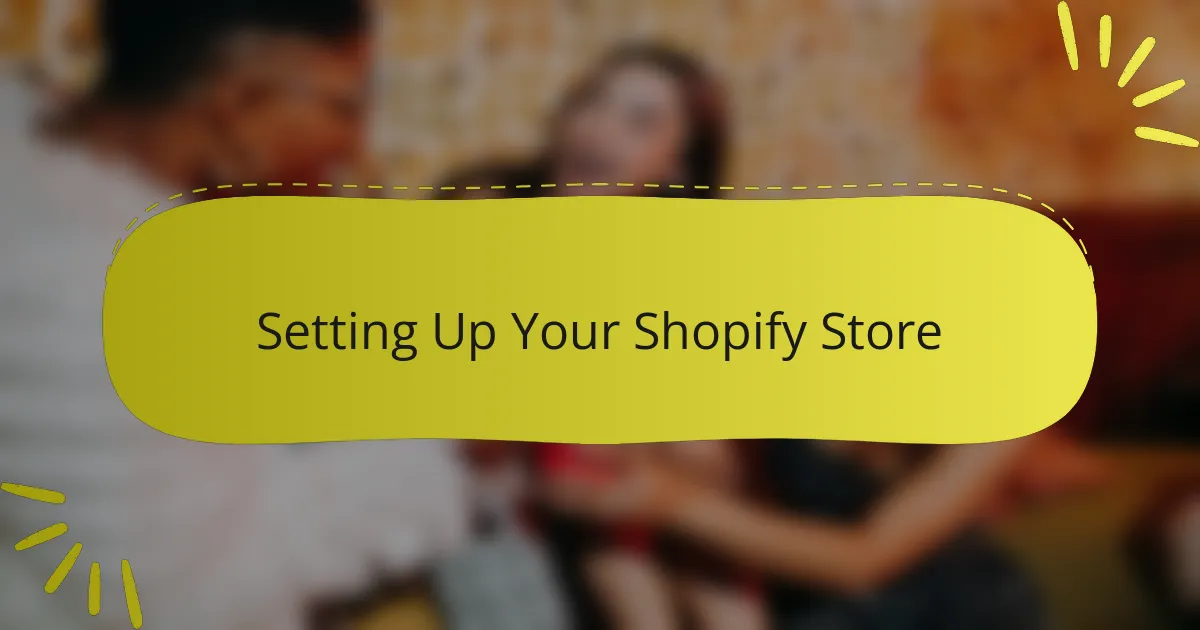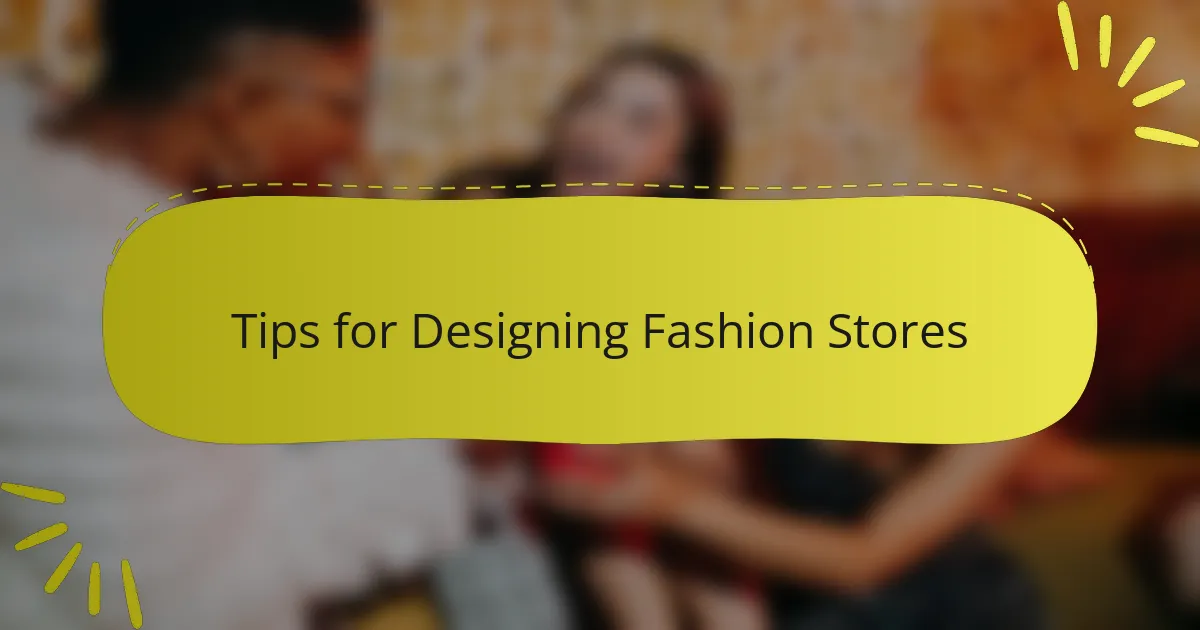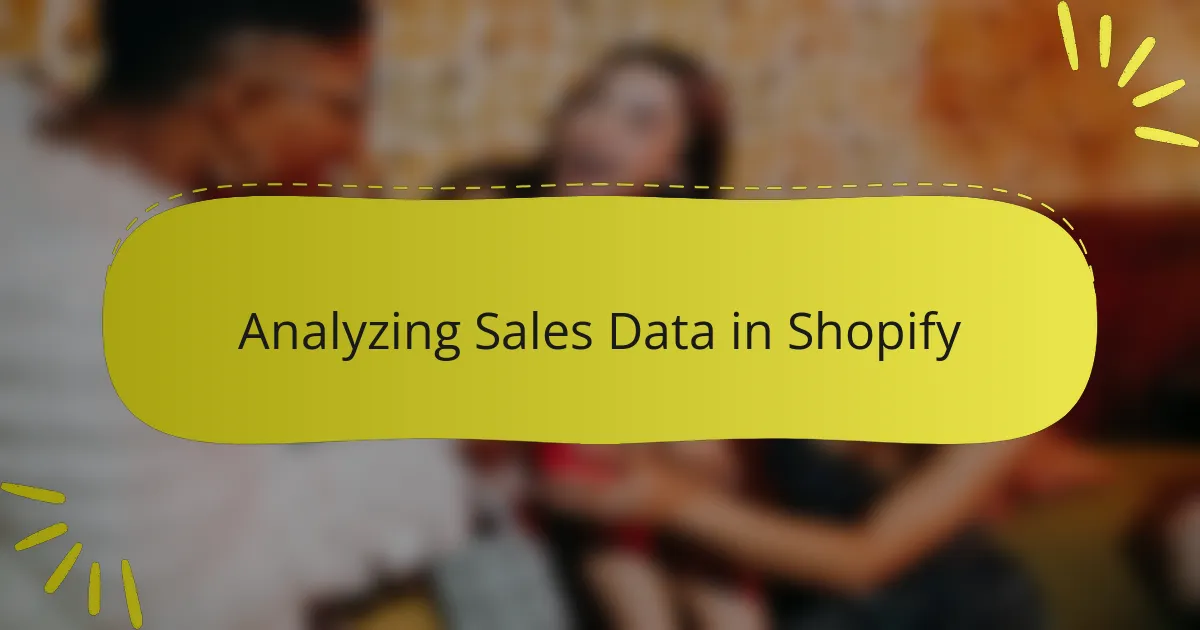Key takeaways
- Shopify simplifies the e-commerce process for fashion brands through its user-friendly interface, mobile optimization, and integration with payment gateways and social media.
- The platform provides valuable analytics tools that empower retailers to understand customer behavior and make informed inventory decisions.
- Effective store design involves high-quality imagery, consistent branding, and intuitive navigation for an engaging shopping experience.
- A multi-channel marketing strategy, including social media marketing and influencer collaborations, significantly enhances brand visibility and customer engagement.

Overview of Shopify for Fashion
Shopify has transformed the way fashion brands operate by providing a user-friendly platform tailored for online sales. I remember when I first ventured into e-commerce; the thought of setting up a website felt daunting. But with Shopify’s intuitive interface, I was able to craft a visually appealing store without any technical expertise.
One of the standout features of Shopify for fashion retailers is its mobile optimization. Given how often our customers browse on their smartphones, I find it reassuring that Shopify themes are responsive and look stunning on any device. Have you ever shopped from your phone? It’s an experience that you want to be seamless and enjoyable.
Additionally, Shopify’s integration with various payment gateways and social media platforms has enhanced my ability to reach customers where they are. I’ve seen firsthand how easy it is to sell directly through Instagram or Facebook, expanding my brand’s visibility. This creates an exciting landscape for fashion brands; it’s all about leveraging these tools to connect and engage with our audience effectively.

Benefits of Using Shopify
Shopify streamlines inventory management for fashion retailers, which is crucial in this fast-paced industry. I used to spend hours keeping track of stock levels across different platforms, but now, the built-in tools let me manage everything from one dashboard. It’s a game-changer when you can focus more on creativity rather than logistics!
One of my favorite benefits is the robust analytics Shopify provides. Have you ever wondered how to better understand your customers’ buying habits? With their comprehensive reports, I’m able to see which items are flying off the shelves and which need a little push, allowing me to make informed decisions quickly. It feels empowering to base my strategies on solid data rather than guesswork.
Moreover, the community and support around Shopify are exceptional. Whenever I faced challenges, whether in design or functionality, I turned to their customer service and user forums for help. I distinctly remember a late night when I was wrestling with a technical issue and found a solution through their resources—it felt like having a reliable friend just a message away. This support gives me the confidence to experiment with my fashion website, knowing there’s help available when I need it.

Setting Up Your Shopify Store
Setting up your Shopify store is an exciting journey filled with potential. The first step is selecting a theme that resonates with your brand’s identity. I remember scrolling through countless options, each one sparking new ideas for how I wanted to present my fashion line. Choosing the right visual aesthetic not only showcases your products but also tells your brand’s story.
Once you’ve chosen a theme, customizing it to suit your style is where the fun begins, and Shopify makes this surprisingly easy. From changing colors to adding unique features, I found myself lost in a world of creativity. Have you ever felt that thrill when your vision starts to take shape? I certainly did, especially when I could incorporate features like product galleries that really highlighted the fabrics and patterns I love.
Next up is setting up your payment options, which is crucial for seamless transactions. I once overlooked this step and faced a few hiccups with customer orders, which taught me just how vital this aspect is. I quickly learned the importance of integrating various payment gateways to cater to my audience’s preferences. It not only boosts customer trust but also ensures that no opportunity slips through my fingers!

Tips for Designing Fashion Stores
When I design fashion stores on Shopify, I prioritize a clean, visually appealing layout that resonates with the brand’s identity. Capturing the essence of the collection through vibrant imagery and cohesive color schemes can create an immersive shopping experience. I remember the first time I launched a site and received positive feedback on the visual vibe—it pushed me to explore even more creative layouts.
Here are some tips I’ve found to be effective:
- Use high-quality images that showcase your products from different angles.
- Limit the number of fonts to maintain a streamlined look.
- Incorporate a consistent color palette that reflects your brand’s personality.
- Utilize whitespace strategically to prevent a cluttered feel.
- Ensure the navigation is intuitive, making it easy for customers to find what they’re looking for.
- Highlight customer reviews, as they add credibility and emotional connection.
- Implement a mobile-friendly design, since many shoppers browse on their phones.

Marketing Strategies for Fashion Sales
When it comes to marketing my fashion sales on Shopify, I’ve found that a multi-channel approach works best. Social media platforms like Instagram and Pinterest are incredibly powerful for showcasing visually appealing content. By sharing high-quality images of my products, I create an emotional connection with potential customers, drawing them into the story behind each piece.
In addition, I leverage email marketing to keep my customers informed about new releases and exclusive offers. I’ve discovered that crafting personalized messages makes a significant difference in engagement. When I receive positive feedback from customers feeling connected to my brand, it reinforces the effectiveness of these strategies.
Another aspect I’ve incorporated is collaboration with influencers. Partnering with fashion bloggers who resonate with my brand’s aesthetic has expanded my reach tremendously. I’ve seen firsthand how their endorsements can lead to an influx of traffic and conversions on my Shopify store.
| Strategy | Description |
|---|---|
| Social Media Marketing | Utilizing platforms like Instagram and Pinterest to showcase fashion visually and foster emotional connections. |
| Email Marketing | Sending personalized emails to update customers on new arrivals and exclusive offers, enhancing engagement. |
| Influencer Collaborations | Partnering with fashion influencers to reach a wider audience and boost credibility. |

Analyzing Sales Data in Shopify
Analyzing sales data in Shopify is essential for any fashion business. I find it fascinating how straightforward it is to access key metrics like total sales, average order value, and customer behavior. By diving into this data, I can identify which products are flying off the virtual shelves and which ones may need a little extra marketing love.
One of my favorite features is the ability to segment data by various factors, such as location or device type. For instance, when I noticed that certain styles were particularly popular in specific regions, I adjusted my marketing strategies accordingly. This not only enhanced my sales but also helped me connect more authentically with my audience.
When I review sales reports, I often feel a mix of excitement and determination. It’s like holding a mirror to my business, helping me see what works well and where there’s room for improvement. This analysis empowers me to make informed decisions that ultimately elevate my brand.
| Metric | Description |
|---|---|
| Total Sales | Overall revenue generated within a specific period. |
| Average Order Value | The average amount spent by customers per transaction. |
| Customer Behavior | Insights into how customers navigate the store and what products catch their interest. |
| Product Performance | Comparison of sales across different products or collections. |

Personal Experience with Shopify Success
Using Shopify has been a pivotal experience in my journey as a fashion retailer. When I first launched my store, I was anxious about how to reach my audience effectively. But as I navigated through Shopify’s features, I recall that exhilarating moment when my first sale came through— it felt like a validation of all my hard work and dreams.
What truly sets Shopify apart in my experience is the incredible flexibility it offers. There was this one time I wanted to promote a seasonal collection but was unsure how to make an impact. Experimenting with custom landing pages and targeted email campaigns led to a significant increase in traffic. It was rewarding to see that my ideas, combined with the right tools, could yield such tangible results.
I’ve also learned the value of community support while using Shopify. There were days when I felt overwhelmed by technical challenges. I still remember the nerves I felt posting in the user forums, but the outpouring of advice and encouragement from fellow entrepreneurs was heartwarming. That sense of camaraderie not only helped me overcome my hurdles but also reinforced my commitment to helping others on their e-commerce journey.